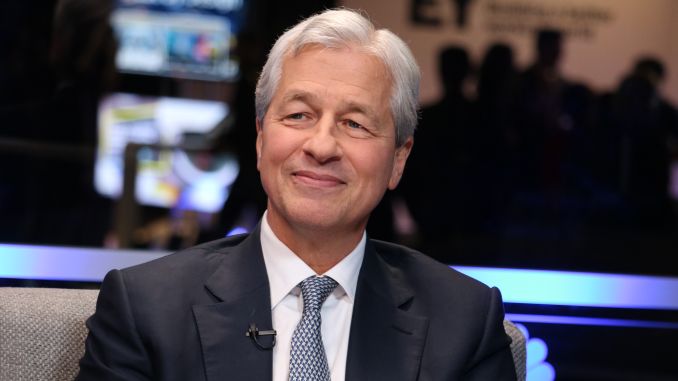The market traded flat again this morning as investors awaited minutes from the Federal Open Market Committee’s (FOMC) last policy meeting. All three major indexes remain mostly unchanged from yesterday.
Reopening-sensitive stocks initially shot higher only to give up most of their gains around noon. Tech managed to hold steady as well while Treasury yields dipped lower.
It could be the “quiet before the storm,” preceding the market’s next leg-up. Or, the prelude to a short-lived correction. JPMorgan Chase CEO Jamie Dimon sees the former as a real possibility according to his annual letter, released this morning.
“I have little doubt that with excess savings, new stimulus savings, huge deficit spending, more QE, a new potential infrastructure bill, a successful vaccine and euphoria around the end of the pandemic, the U.S. economy will likely boom,” Dimon said.
“This boom could easily run into 2023 because all the spending could extend well into 2023.”
Ally Invest chief investment strategist Lindsey Bell holds a similar belief.
“There are lots of reasons to be excited about the months ahead, and we’re generally optimistic for this year,” Bell noted, before cautioning that a consolidation phase could soon arrive.
“Stocks’ momentum is strong, no doubt about that. But the market may be ready to take a breather as investors digest all the good news, determine how much of that is priced in and weigh it against uncertain risks like inflation.”
The International Monetary Fund (IMF) also threw bulls a bone last evening when it raised its yearly global growth forecast from 5.5% to 6%, thanks to a better-than-expected U.S. recovery. If achieved, it would represent the highest global economic growth reading since 1976.
“Even with high uncertainty about the path of this pandemic, a way out of this health economic crisis is increasingly visible,” said IMF Chief Economist Gita Gopinath.
But not every analyst is on board with Dimon, Bell, and Gopinath. Commerzbank strategist Esther Reichelt told clients that “a large share of the hopes of a U.S. growth boom supported by state aid and rapid vaccination progress has already been priced in” to the dollar, which found significant strength in 2021.
She continued, adding:
“Further and more pronounced USD gains would only be justified if this boom also caused rising inflation rates to which the Fed would have to react with higher interest rates.”
In other words, little has changed. If the U.S. economy continues to roar, it will do so until inflation forces the Fed’s hand.
And if the recovery slows? The Fed will simply “kick the can” further down the road, providing additional liquidity until it eventually runs into the same inflation problem at a later date.
The long-term scenario is certainly grim. But the market’s short-term prospects are the opposite thanks to the fantasy that everything will turn out just fine. This irrational exuberance from bulls has made staying out of the market a poor investing decision over the last few months.
And it’s likely to continue until economic reports suggest that inflation’s becoming an issue. So, enjoy the party while it lasts.
Because when it ends, it’ll do so with a bang, as investors scramble to get out before the Fed brings the hammer down. Dimon thinks the bull market could run until at least 2023. It could go even longer, too.
It’s all thanks to our friends at the Fed, who don’t look ready to end the equity “backstopping” any time soon.








